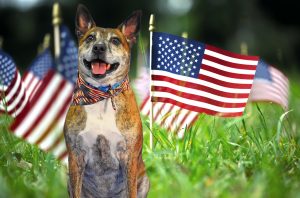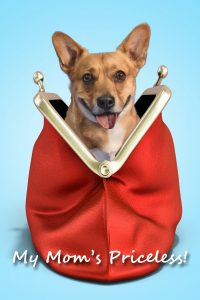With a Little Help From His Friends……..
Ed has always been the guy in his neighborhood that everyone brought animals to. Need a place to stash your pet while you’re in rehab? Give it to Ed. Can’t deal with that crazy puppy anymore? Give it to Ed. Moving to an apartment and can’t take a pet with you? Ed will take it.
Animals have been a part of Ed’s life for as long as he can remember; at age 84, that’s a lot of remembering. He and his wife lived a modest life on a little piece of land on a back road not far from here. They ran their own business out of their mobile home and lived a relatively simple but contented existence. They were genuinely kind people; they never turned away a visitor; two-legged or four-legged.
When the wife died of cancer, life became much harder and lonelier for Ed. Their animals, mostly dogs and cats, filled the empty space that remained. They became the primary companions for this elderly man who carried food and water to them each day, neglecting his own needs to make sure they had enough to eat. But as time marches on, our bodies become more frail and our stamina isn’t what it used to be. Our animals age, too. They need more care, more amenities, and more attention. Tasks that once took just a few minutes can take much longer when we’re older. And it seems like everything breaks down around us. Facing this alone can be absolutely overwhelming, and for a proud, independent man like Ed, it’s hard to admit defeat.
Debbie met Ed when she approached him about spaying his cats. Unable to run the business anymore and living on a small monthly social security check, Ed had eventually found it impossible to offer veterinary care to any of his own animals, let alone the stray cats who seemed to materialize out of nowhere and multiply out of control. Once he was sure Deb wasn’t there to judge or condemn him, the old man was happy to accept her help.
Deb and Leona methodically and religiously showed up at Ed’s place several times each month with traps, bait and blankets; trapping and transporting, bringing the spayed and vaccinated feral adults back for release while adopting out the kittens who were still friendly enough to find adoption. They brought food and houses and straw for bedding. And gradually, the population stabilized. Now, sleek, healthy cats lounge peacefully in the sun outside Ed’s mobile home. And the kittens are all growing up socialized with loving families of their own.
During this process, trust and friendship between Ed and these two TASP volunteers grew and a bond was created. Soon it would be time for Deb and Leona to introduce Ed to some more TASP volunteers so the living condition of his dogs could be improved. Over the months that these ladies had been doing the Trap Neuter Return (TNR) of the cats, other TASP volunteers, Win, Tim, Michelene, Mitch and a group of outstanding young men from Rensselaer Polytechnic Institute’s Acacia Fraternity, were building five large insulated dog houses at a property in Pittstown. Donated kennel panels were being stockpiled and prepared. These would be the new homes designed for the 5 dogs currently living chained to aging coops in the tall weeds at Ed’s place.
Flash forward to November 4. TASP volunteers pull into Ed’s driveway to deliver the kennel panels and to meet with Ed about where to place the new homes. It was decided that arranging the kennels across the long side of the mobile home would allow for the most space and the easiest access for the old man who would be tending to these equally old dogs. On the following day, Ed and his son worked shoulder to shoulder with 8 TASP volunteers to clear the site, distribute the new houses and erect the kennels. All the while, curious neighbors came to witness the event. One even cried for joy at the change that occurred that day for animals AND people.
While we were there, all of us saw for ourselves how much Ed truly loves these animals and how much they truly love and trust him. Aged and not accustomed to a lot of company, the dogs would not have stood much chance as shelter pets. “Unadoptable,” would be the term used to describe them. But with Ed, they were friends and equals; they got the best care Ed could afford to give them.
As they entered the kennels in pairs, with their side by side houses, the dogs reacted to the new living arrangements with 100% approval. The old coon hounds climbed right up into the straw in their houses and started arranging their nests. The two Chow sisters frolicked together and rolled in the grass outside their houses, finally able to play like regular dogs instead of gazing at each other, chained, from across the yard. The big red Chow male who preferred to have his own kennel in the middle smiled gratefully outside his new house, glancing with approval at the Chow girls and the old hounds who were now his next-door neighbors.
All the time we were working at Ed’s he kept coming over and trying to give us things: a screwdriver he wanted us to have, a 2017 calendar sporting photos of puppies and kittens, an extra set of wrenches he said he couldn’t use. He wanted so badly to do something for us because he valued so deeply what we were doing for him. As we were leaving, he touched my arm and said, “I love you all, now and forever.”
We now have a NEW TASP Volunteer, Ed’s son! He was so impressed by what TASP does that he wants to be a part of this kind of animal welfare work. We visit Ed now and then to drop off donated food and to chat with the old man. When the time comes, Ed will return the kennels and houses to TASP so they can be rehabbed and reused for the next needy dogs. But for now, he and his dogs are welcome to these gifts. And life is good at Ed’s place these days.
Ready to see the video? Click here to view.



